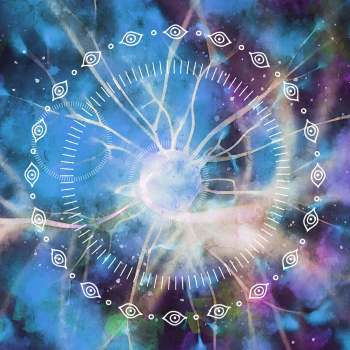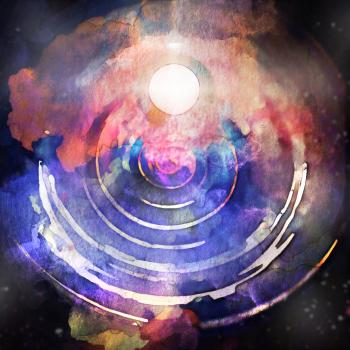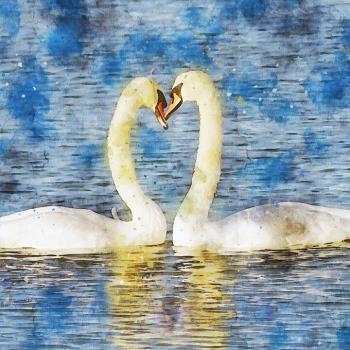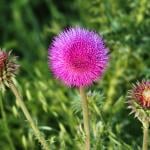Local Animistic practice is about respect and seeing all matter as expressions of personhood. That means animism centers on relationships. I don’t believe that you can separate a true animistic practice from the locality. I don’t mean that you can’t honor spirits from far away, or that you can’t be a Celtic Animist in Manhattan. You can. I do think that Celtic Animist is going to have to grapple with how to understand the world they move through, land that was originally held by the tribes there. I work with those realities here in the midwest, where the Mississauga, Odawa, Anishinabewaki, and Peoria people all share land. I am a Midwestern animist, building relationships with the temperate forests, swamps, bogs, rivers, and lakes that reside here where I am.
Local Practice is so important for Animism
Animism is by its nature a localized practice. It is a materialistic practice. I’m not talking about capitalistic materialism where I just want lots of stuff. I’m talking about the fact that it’s a practice rooted in the material, in physical, real, touchable stuff. Rocks, trees, and humans are material, we are matter, made of atoms. Animism is about atoms, and sometimes the stuff between atoms. What we know about matter comes from our senses and our ability to sense. We know that bees can see ultraviolet light but we can’t. Dogs can smell things we can’t. We know our senses are limited, and have to work within the confines of that reality. Certainly we’ve got a ton of cool ways to communicate and see images of things from all over the planet, but watching a documentary on the Amazon river basin is building a relationship with the monitor and the atoms and electrons within that TV.
Start your animism with what you can sense, and you’ll get real live interaction, not just a recording. It’s one thing to be super into foxes and have fox art and teeshirts and little stuffies. It’s an entirely different experience to see a fox run past you on a forest trail. I know this, because both of those are my lived experiences. (What? Foxes are cute and I like stuffies sometimes!)
Focus on Your Rivers for Animistic Practice
Did you note how in the first paragraph when I was talking about temperate ecosystems absolutely everything involved water? Water is central to human existence. We know this, all American schoolchildren learn about the Nile river basin and the Tigris and Euphrates river basins as the centers of ancient civilization. We have the conception that rivers are important to us but we’ve lost the why. Rivers are alive, and sources of vast energy, fertility and power. Even now we dam them, we make electricity from them, we use them, in vast waterworks. Tons of concrete go into controlling their wild flooding. The Army Corps of Engineers has spent decades attempting to tame rivers, and often failing, but destroying ecosystems well enough.
Rivers are alive.
I was reading Rivers of Power a book about the history, geology, hydrology, and modern use of rivers. The author is a scientist, who studies river hydrology, and for the first half of the book, he does a fab job of being objective and sciency sounding. I have to say it was worth reading just for the history. About halfway through he starts talking about modern rivers and his research, and I noticed something: rivers had opinions. They had pride, and strength, and tenacity. He couldn’t help but write about a river as if it was a person. In the scientific community, such an attitude is inappropriate. Humans should never ascribe living behavior to non-living things. Here was a person who had dedicated his entire life to studying rivers from an objective perspective, and he couldn’t help but talk about them as people. It kinda warmed the cockles of my cold little heart.
Rivers are powerful. They are the mountain carvers, the silt carriers, the continent shapers, and the fertility makers.
Working with your local river ties you into that. It’s like making friends with the mayor. Rivers are big, powerful, world-shaping spirits, and they have a lot to say to little animist hoomans like us.

Here’s an excerpt from my own journals and recent practice with the local river:
We decided to meet at the confluence of the grand and red cedar rivers to do our first work, with the idea of gaining a sigil that might represent and connect us to the river there. I prepared, bringing one of the last three anchoring sticks that D— had made, along with offerings, and with the glass vials that M—, his widow had brought by. It felt very right to get to have a chance to hug her before heading off to continue his work. Though I know it will be very different when I do the river work, and it will be different when others do the river work, it is because of him that I am doing it the way that I am doing it.
I went to the point, with my bag full of things and my tea, and sat at the edge of the pier on the jut of land that is between the rivers. The grand comes in on my left from the west, along the edge of the interstate, with much concrete on the far bank but trees and a cut bank along the side of the river closest to me. On the right, the Red Cedar meanders in a more leisurely course coming up from the south with gentle footbridges and trees lining the way. It is more connected to the footpaths and property values of the parklands to the south and has a more gentle and fertile aspect. The two come together both turning in their paths and then joining in a wide area that is almost like a lake within a river. Afterward, it bends again just as the two separate rivers bent before. Just after the confluence as it heads under the I496 the whole river heads northward. There is a lot of concrete, retaining walls, and pillars to hold up the expressway.
When you look at the whole thing from a map it forms a triskele shape. On the point, there is a pier, and when you sit on the pier you jut out into the center of that triskele of swirling waters.
I sat there simply. I wanted to feel the place, and be still within it. I was thinking about the work, and how it might be done, and what might be useful when I saw a large bird across the river, flying in the scrappy trees that grow along the bank. It was high up and large and I thought it might be a turkey vulture. As it flew across the confluence it banked back and forth and I thought it might turn to the left or right, but it kept coming back to flying toward me, like how a kite flies on a string. I stared as it got closer, and thought of many stories D— told of eagles being called by his friends on the northern reservations.
I was like, “Holy f*ck. Is that an eagle?”
The sacred and the profane are usually more mixed than we want them to be. And it was an eagle. I saw its brown body and thick long wings and its white head.
It flew directly over me as I sat on the pier on the point of the confluence of my sacred rivers. Did I raise my hands in gratitude or blessing? I’m not sure. It was in an open way, to honor its passing over. What else can you really do? And I turned and kept watching it and saw that my colleague in the work, H— was walking up the path wearing their brown brimmed hat and their black patch jacket, looking like they stepped out of a Charles DeLint novel and that eagle flew over them too even as I still had my hands raised in blessing.
Sometimes you just can’t make that stuff up.
We sat together then and talked of ancestors, and life, and rivers. We gave our offerings, and the swallows seemed to accept us and swooped under our feet and above our heads. We gave more offerings and rooted our own selves through magic and talisman into the river itself. Most of all we watched. The flock of swallows caught their dinner in the overcast afternoon light. A kingfisher swooped in long low glides upstream along the river. Fish jumped and splashed near the cut bank before the bend. A muskrat paddled from one bank of the Red Cedar to the other trailing a long vee of its wake. Ducks landed, robins, cardinals, and red-winged blackbirds sang their throaty songs. We were just more people in a busy community of people already far more at home than we could be.
We talked about what it was that we could do, or should do, in this river working. Coming up with a specific sigil for this place seemed not foolish, but just unimportant. It was like wanting to name a place when it already had a name. I wanted to learn the language of the wind and why the birds flew from the westward side toward the east when a southern wind picked up and made the strangest rippling pattern on the river. It reminded me of how I used to feel like there was a secret language, a secret message written in the fairy stories of old. I wanted to be in that language, but also to learn it and share it.
I sketched and took notes as H— took photos. We were silent for some time, both of us working on our own tasks.
Steps to Build an Animistic Relationship with Your River
So like you’re totally convinced, right? You’re going to run right out and start buying hydrological maps from USGS, and joining your local river cleanup? Great! Here are some ideas on how to build a successful relationship with your river. I’m not going to promise you’ll get eagles, but you might.
- Learn about the rivers through maps, articles on ecology, and local ecological groups
- Learn about the indigenous names, myths, and lore of your river
- Learn about your ancestral lore or the lore of cultures that call you and what they say about rivers
- Visit your river, find multiple access points and walk it in all kinds of weather and seasons
- Do magical or trance work to connect to the river spirit and learn how you relate to the river and how you see it and what it may ask of you
- Do the things it asks, as long as it is reasonable and within your boundaries and consent.
- Write down what you learn and compare notes with others who love your river.
Local Animistic Practice for Everyone
I can’t tell you what you’ll learn from the river, or what its names are, or how you should practice. I can only tell you ways to talk to your local spirits, who will teach you if you listen. Local animistic practice is healing for people. Both for the human and the non-human people. Animism is both ancient and new and is found around the world. Practice the skill of opening oneself to the non-human world. It’s one of those tasks that is easy to say, and a lifetime in the doing. I keep doing so in order to share some sliver of the understanding that one grasps, like the low sound of the wind on the water. You don’t just have to read novels about magical people. You can be magical people. All you need to do is listen.
If you like my work and you’d like to support my writing, please consider becoming a Patreon. It is what allows me to continue doing this work.
















